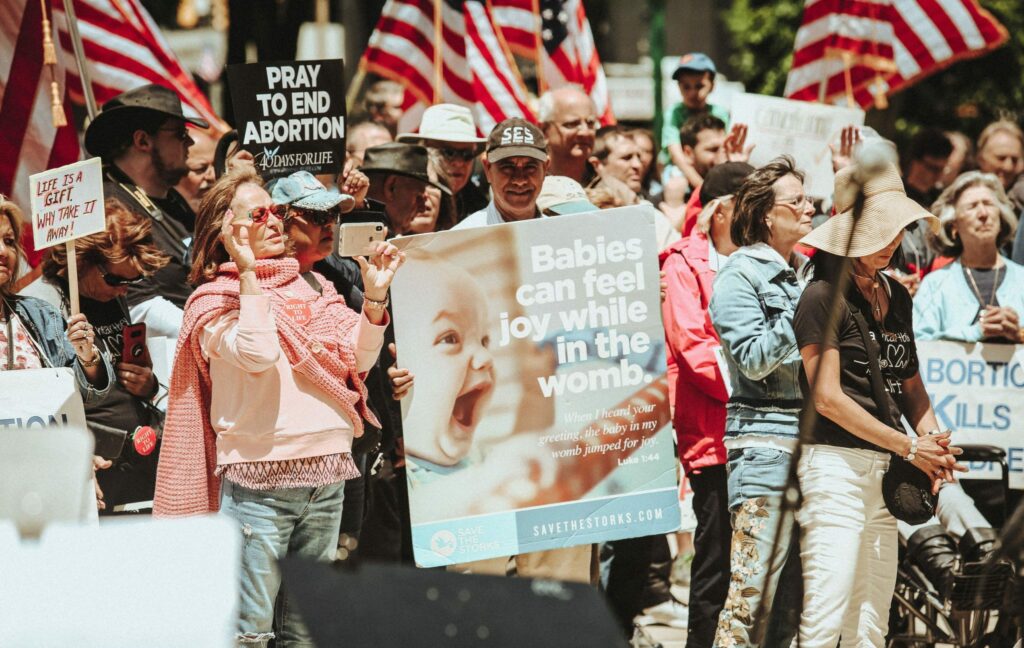Blog Post
Preparing To Build A Post-Roe World
By Jonathon Van Maren
For the first time in decades, the pro-life movement is allowing itself to dream of a post-Roe world. With the arguments during the Supreme Court hearing of Dobbs v. Jackson Women’s Whole Health going as well as can be expected for the anti-abortion movement, both pro-life activists and abortion advocates are increasingly convinced that sometime next year, Roe will finally die, predeceased by 60 million aborted American children. If that comes to pass, the primary goal of a powerful and vibrant political movement will be achieved—and discussion is turning to what comes next.
Plans for how to ensure that women and children receive the support that they need in a restrictive abortion regime have been in the works for some time. Last year, Emma Green penned an article for the Atlantic titled “The Anti-Abortion-Rights Movement Prepares to Build a Post-Roe World,” detailing some of the pro-life organizations and financial backers laying the groundwork. Meanwhile, as Politico reported in an essay titled “‘A post-Roe strategy’: The next phase of the abortion fight has already begun,” other groups such as Students for Life of America and Americans United for Life are preparing to lobby state legislatures to ensure that abortion bans sail through after Roe falls.
Daniel K. Williams, professor of history at the University of West Georgia, has a few ideas of his own. Author of the seminal history Defenders of the Unborn: The Pro-Life Movement before Roe v. Wade (Oxford University Press), Williams’ most recent book, The Politics of the Cross: A Christian Alternative to Partisanship, came out earlier this year. In a lengthy chapter on abortion, Williams details the history of how abortion went from an issue that both many liberals and conservatives cared deeply about to an almost exclusively partisan one. Even the Kennedy family was once split on abortion—and if Sargent and Eunice Shriver had been successful in their attempt ensure that pro-lifers were welcome in the Democratic Party, American politics might look very different.
A post-Roe world will surely pose many challenges but may also give unprecedented opportunities for political realignment. Williams’ view of the pro-life movement’s alliance with the GOP is nuanced. On one hand, it has obviously paid off. If the Supreme Court overturns Roe v. Wade next year—which Williams thinks likely—it will be the successful conclusion to a decades-long strategy based on electing Republicans in exchange for judicial appointments. In the long term, however, the marriage of pro-family social conservatives to libertarians and big business has also had significant drawbacks.
“There is a close relationship between abortion and poverty,” Williams told me. “Fifty percent of women who obtain abortions in the United States today are living below the poverty line, and an additional 25 percent are considered lower-income, with annual earnings that are just barely above the poverty level. The majority are already mothers of at least one child. One of the most common reasons they give for an abortion is that they fear they will not be able to care for an additional child.”
As Williams detailed in Defenders of the Unborn, many politically progressive pro-lifers in the early 1970s wanted to reduce the abortion rate by creating a social safety net for lower-income women experiencing crisis pregnancies. “This strategy would still make sense today, because the correlation between poverty and abortion is even stronger than it was half a century ago,” Williams noted. Indeed, in most places it costs thousands of dollars to give birth—and usually mere hundreds to have an abortion. From a pro-life perspective, the financial pressures and incentives run in precisely the wrong direction.
READ THE REST OF THIS COLUMN AT THE AMERICAN CONSERVATIVE









An interesting piece. I think that, at least in the short-medium term, pro-life advocates pushing for a more expansive social safety net (which will become even more important after most abortions become illegal) are better off trying to move the Republican Party in that direction than they are trying to make the Democratic Party more pro-life. The abortion lobby’s death grip on the Democratic Party has only grown tighter since 2010, and you can count the number of Democrats that aren’t 100% pro-abortion (in both chambers of congress) on one hand. The realignment of working-class whites (and, increasingly, non-white Americans) toward the GOP and “woke” white collar Americans toward the Democrats is likely to accelerate in a post-Roe America, and today the GOP is a very different beast than it was in the time of Paul Ryan and Mitt Romney (back when privatizing entitlement programs and repealing Obamacare were on the table).
I consistently appreciate your thoughtful comments.